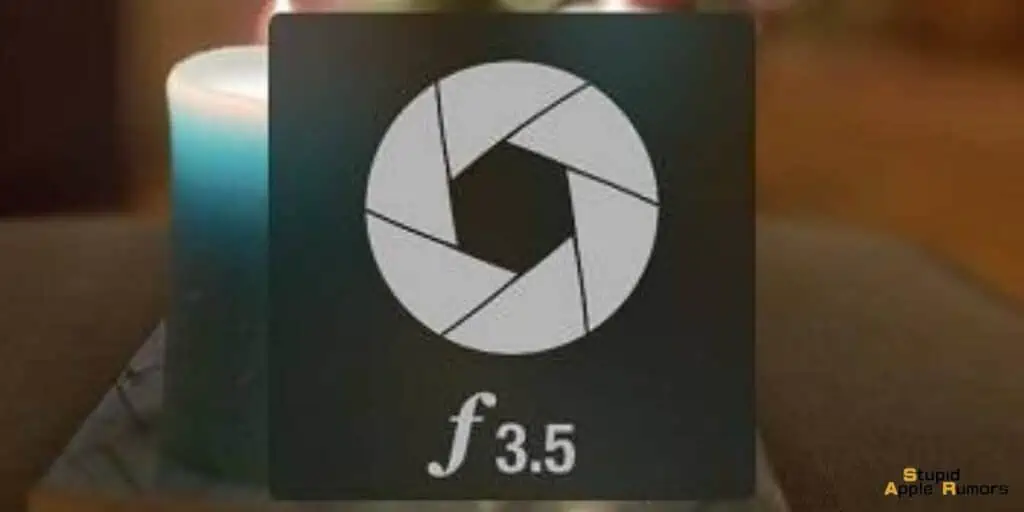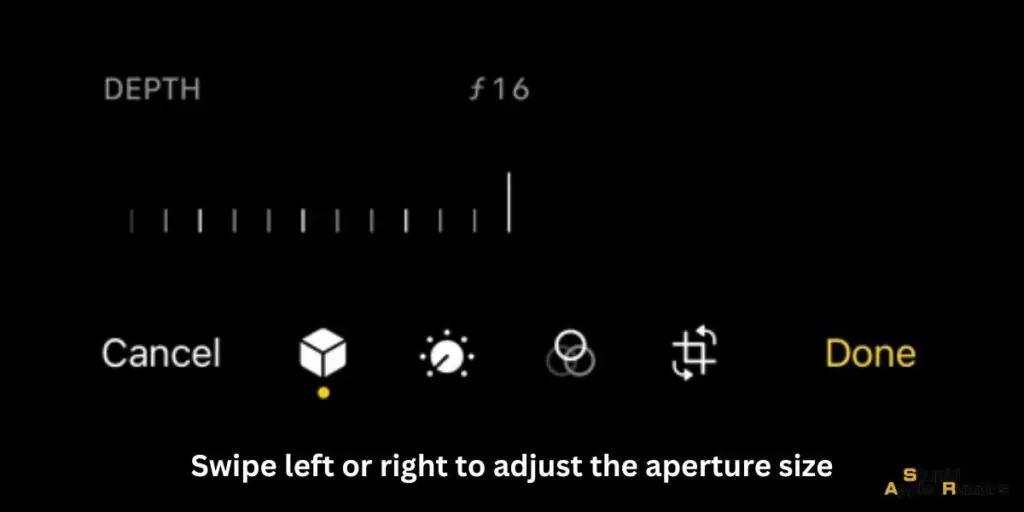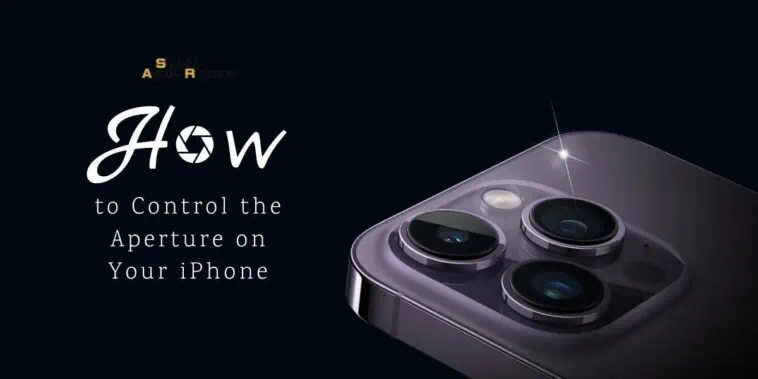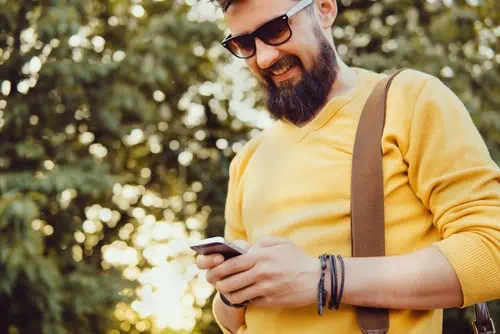If you’re someone who loves taking pictures with your iPhone, you might have noticed that some of your pictures have a blurry background while others are completely in focus.
That’s because of the aperture, which is the opening in your camera lens that controls the amount of light that enters the camera.
So how to control the aperture on your iPhone? To do this, open the camera app and tap on Portrait mode, now tap on the ‘F’ icon at the top of the screen. Swipe left or right to adjust the aperture size. Experiment with different settings to achieve the desired effect for your photo.
In this article, I’ll cover everything you need to know about aperture and how to control it on your iPhone.
How to Control the Aperture on Your iPhone
Table of Contents
What is Aperture and How Does it Work?
Aperture refers to the opening in your camera lens that controls the amount of light that enters the camera.
It is measured in f-stops, which are numbers that indicate the size of the aperture. The smaller the f-stop number, the larger the aperture opening and the more light that enters the camera.
Aperture also controls the depth of field in your photos, which is the range of distance in a scene that is in focus.

A larger aperture (smaller f-stop number) will result in a shallow depth of field, which means that only a small area in your photo will be in focus, while the rest will be blurred.
This is great for portraits and close-up shots where you want to blur out the background and focus on the subject.
On the other hand, a smaller aperture (larger f-stop number) will result in a deep depth of field, which means that most of the scene will be in focus.
This is great for landscapes and group photos where you want everything to be in focus.
How to Modify the Aperture on Your iPhone
Now that you know what aperture is and how it works, let’s talk about how to modify it on your iPhone.
The iPhone has a fixed aperture, which means that you can’t physically change the size of the aperture like you can on a professional camera with interchangeable lenses.
However, you can simulate different aperture settings by adjusting the camera settings on your iPhone.

To control the aperture on your iPhone, you’ll need to use the Camera app and select the Portrait mode or the Depth Control feature (available on iPhone XR and later models).
These modes use computational photography to simulate a shallow depth of field by blurring the background, even though the physical aperture remains fixed.
In Portrait mode, your iPhone will automatically choose the best aperture setting based on the lighting conditions.
You can adjust the level of blur by moving the slider at the bottom of the screen. Dragging it to the right will increase the blur and create a more shallow depth of field, while dragging it to the left will decrease the blur and create a deeper depth of field.

In Depth Control mode, you have more control over the aperture settings. After selecting the mode, you can use the slider at the bottom of the screen to adjust the aperture setting.
Dragging it to the left will increase the f-stop number and create a deeper depth of field, while dragging it to the right will decrease the f-stop number and create a more shallow depth of field.
What I Noticed Before and After Adjusting the Aperture
After experimenting with the different aperture settings on my iPhone, I noticed a significant difference in the photos I took.
When I used a shallow depth of field, the subject in my photos stood out more and the background was blurred, creating a more professional and artistic look.
I took a portrait of this beautiful sun flower with my home in the background.

When I used a shallow depth of field, the flower was in sharp focus while the background was beautifully blurred, creating a stunning photo that looked like it was taken with a professional camera.
When I used a deeper depth of field, everything in the photo was in focus, including the background. This was great for landscape photos, where I wanted everything to be in focus, but not so great for portraits or close-up shots.
Tips on When to Modify the Aperture on an iPhone
- When you want to control the depth of field: The aperture controls the amount of light entering the lens and also the depth of field. When you want to create a shallow depth of field, i.e., when you want to blur the background and focus only on the subject, you can open up the aperture. Similarly, when you want a larger depth of field, you can close down the aperture. This can be particularly useful when taking portrait or macro shots.
- When shooting in low light conditions: In low light conditions, you may need to open up the aperture to let in more light. This will help to prevent your photos from being too dark or blurry. However, keep in mind that opening up the aperture too much can also result in a shallow depth of field, which may not be desirable in all situations.
- When shooting in bright light conditions: In bright light conditions, you may need to close down the aperture to prevent overexposure. This is particularly important when shooting outdoors on a sunny day. A smaller aperture will help to reduce the amount of light entering the lens and prevent your photos from appearing too bright or washed out.
- When you want to create a specific effect: Changing the aperture can also be used to create specific effects in your photos. For example, you can use a large aperture to create a bokeh effect, which is a blurred background with a sharp foreground. You can also use a small aperture to create a starburst effect, which is a burst of light coming from bright sources in your photo.
- When shooting in manual mode: If you are shooting in manual mode, you will need to adjust the aperture manually to get the desired exposure. In this case, you should keep in mind the above tips and adjust the aperture based on the lighting conditions, desired depth of field, and any specific effects you want to create.
It’s important to note that not all iPhones have adjustable apertures, so make sure to check the specs of your particular iPhone model before attempting to adjust the aperture.
Additionally, if you’re new to photography, it may take some practice to get the hang of adjusting the aperture effectively.
But with time and experience, you’ll be able to master this important aspect of photography and take stunning photos with your iPhone.
What is the benefit of adjusting the aperture on my iPhone camera?
Adjusting the aperture on your iPhone camera can help you create different effects in your photos, such as blurring the background (known as bokeh) or keeping everything in focus.
It can also help you capture better photos in low light conditions.
Does adjusting the aperture affect the quality of my photos on the iPhone camera?
Adjusting the aperture can affect the quality of your photos on the iPhone camera, as it can change the amount of light that enters the camera and the depth of field.
However, with a good understanding of aperture and how to use it, you can create stunning photos on your iPhone camera.
What is the maximum aperture on an iPhone 14 Pro Max camera?
The maximum aperture on an iPhone camera varies depending on the model. For example, the iPhone 14 Pro Max has a maximum aperture of f/1.78 for the main camera and f/2.8 for the telephoto lens. Whereas the selfie camera is equipped with a 12MP sensor that supports a maximum aperture of f/1.9.
How do I create bokeh in my photos using the aperture on my iPhone camera?
To create bokeh in your photos using the aperture on your iPhone camera, you can use portrait mode or adjust the aperture manually using a third-party camera app.
Make sure to focus on your subject and place it against a background that is further away. This will help create a blurred background effect.
How can I adjust the aperture to capture better photos in low light conditions on my iPhone camera?
To capture better photos in low light conditions on your iPhone camera, you can use a lower aperture (f-stop) setting to allow more light into the camera.
You can also increase the ISO and decrease the shutter speed to capture more light.
Takeaway
Learning how to control the aperture on your iPhone can take your photography skills to the next level.
With the ability to adjust the aperture, you can capture stunning portraits with blurred backgrounds, or landscape shots with sharp detail throughout the entire image.
So, don’t be afraid to experiment with different aperture settings on your iPhone’s camera and see how it affects your photos.
Remember, practice makes perfect, and with a little bit of trial and error, you’ll soon become an expert in using your iPhone’s aperture settings to capture beautiful and unique photos.
Happy snapping!
Related:


